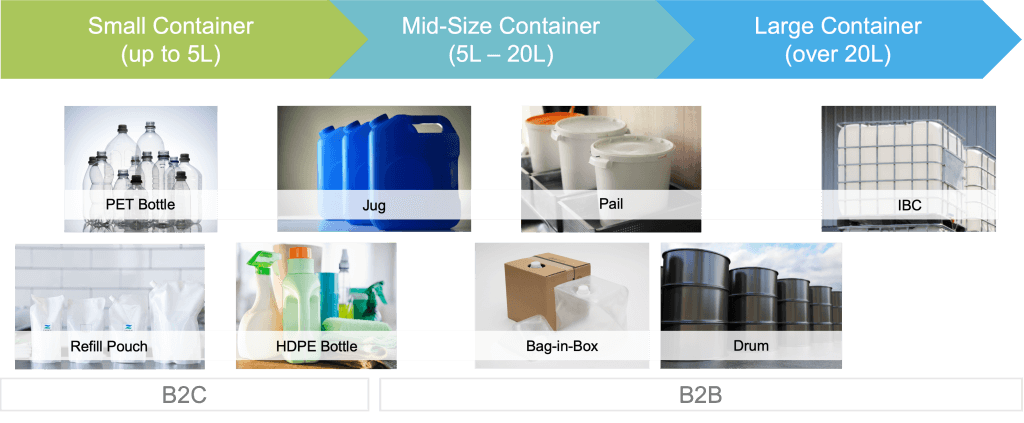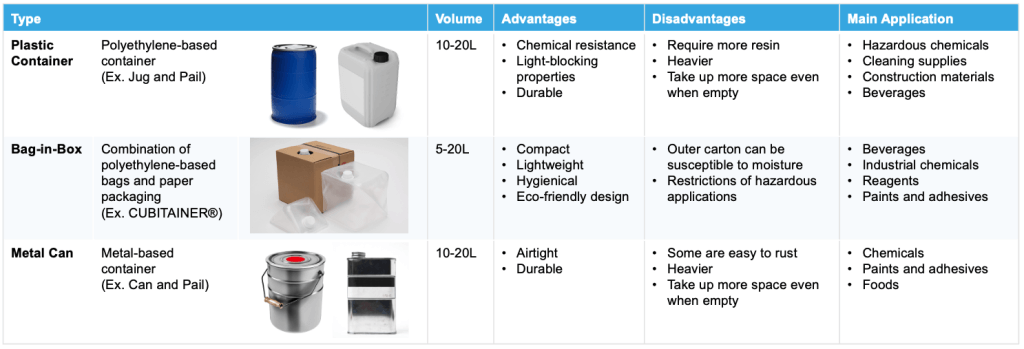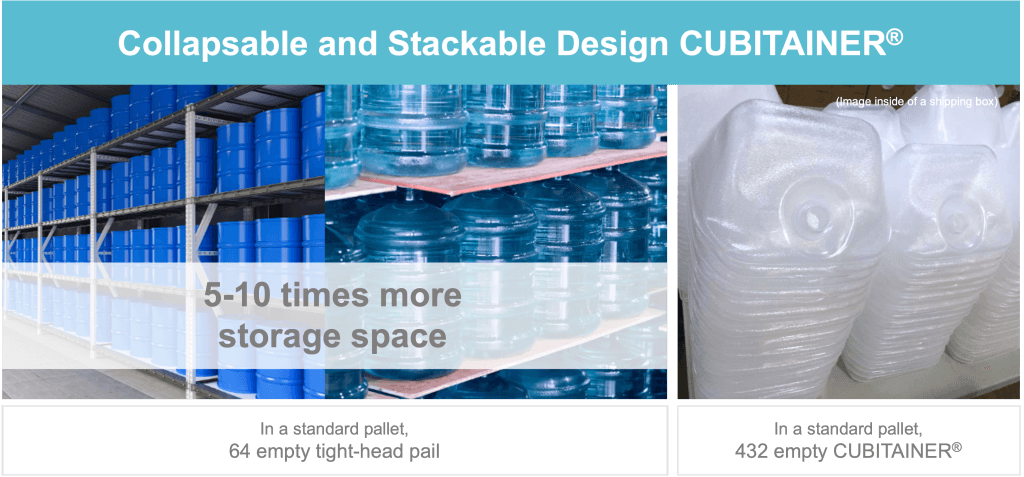CUBITAINER®, also known as bag-in-box containers, has emerged as a game-changer in the liquid storage and transportation industry. CUBITAINER® offers a unique combination of durability, efficiency, sustainability, and versatility, making them an attractive choice for businesses across various sectors. In this blog, we go over the basics of bag-in-box liquid containers.
What is bag-in-box liquid packaging?
A bag-in-box liquid container is a specialized packaging system for storing and transporting liquids. The bag-in-box liquid container is usually considered as small to mid-size packaging. It can be for B2C or B2B, depending on the application. It consists of two main components:
- Outer box: This is typically a carton or corrugated box that provides structural support and protection for the inner bag. The outer box can be decorated or customized to create visually appealing artwork or product displays.
- Inner flexible bag or liner: Inside the outer box is a flexible bag or liner, usually made of low-density polyethylene (LDPE), multi-layer plastic films, or other suitable materials, depending on the types of bag-in-box containers. This inner bag holds the liquid contents.

The design provides superior protection for the liquid contents, ensuring they remain uncontaminated and free from environmental exposure.
What are the different types of liquid packaging?
All around us, we constantly use liquid products in our daily lives, including water, seasonings, disinfectants, personal care products, industrial chemicals, pesticides, and more. Various types of containers are used and can be categorized by capacity as follows.

Bag-in-box packaging is considered a mid-size container with a range capacity of 1 to 5 gallons. There are three main categories of mid-size containers, each with its own pros and cons.

What are the advantages of bag-in-box packaging?
Several key advantages have driven the adoption of this packaging format across multiple industries.
- Increased Efficiency: The bag-in-box design allows for efficient and complete product evacuation, minimizing waste and maximizing product yield. Unlike rigid containers, CUBITAINER® has an evacuation rate of over 99%.
- Space-Saving: Rigid pails are stackable when empty; however, their round shape creates dead space between them. Metal or other rigid containers cannot normally stack. However, when empty, the bag-in-box can be easily stacked. CUBITAINER® has a cubic shape, enabling optimized storage and transportation even with liquids inside. Compared to rigid containers, CUBITAINER® can hold 5-10 times more.

- Environmental Sustainability: Bag-in-box liquid containers use significantly less plastic than rigid formats. Space-saving features contribute to less greenhouse gas emissions during transportation. Moreover, some bag-in-box liquid containers, including CUBITAINER®, are made from one material, making them recycle-ready. Overall, bag-in-box liquid containers contribute to a lower environmental footprint than single-use packaging.
What are the different types of bag-in-box packaging?
There are two distinguished bag-in-box types in the market:
- Laminated bag, bag-in-box: Pillow or gusset pouches are typical laminated bag examples. Multiple films are laminated together to create a required performance.
- Molded bag, bag-in-box: CUBITAINER® is an example of a molded bag. Even though the bag-in-box concept is the same, it has a different manufacturing process. The molded bag is typically thicker than a laminated bag, but it provides higher durability with a broader range of applications.
Both types offer sustainability benefits compared to rigid packaging. It is common to select one of them depending on a product’s application. One of the key advantages of CUBITAINER® compared to other bag-in-box liquid containers is its ability to store and transport a wide range of liquids, including chemicals, food ingredients, and industrial fluids. Compared to traditional rigid packaging, bag-in-box packaging offers several benefits that make it an attractive choice for businesses.
What are the application examples of bag-in-box CUBITAINER®?
CUBITAINER® can be used in a wide range of applications. Here are some common applications.

Chemical and industrial applications:
- Chemicals, solvents, resins, other industrial liquids
- Paints, coatings, adhesives
- Auto fluids
Agriculture applications:
- Liquid fertilizers, pesticides, herbicides
Pharmaceutical and biotechnology applications:
- Pharmaceutical ingredients, reagents, solvents, intermediates
Food and beverage applications:
- Food-grade liquids, sauce, juices, syrups, edible oils
- Spirits, wine, sake
Environmental and waste management applications:
- Waste oils, solvents, other liquid waste materials
Humanitarian aid and relief operations:
- Water, food ingredients, cleaning solutions
Conclusion
As industries prioritize sustainability, efficiency, and cost-effectiveness, CUBITAINER® is poised to become an increasingly popular liquid storage and transportation choice. These innovative containers, with their numerous benefits, are revolutionizing how businesses handle and move their liquid products.
Bag-in-box packaging manufacturer
ZACROS AMERICA is the original manufacturer of the bag-in-box CUBITAINER® (CUBITAINER® is a trademark of the ZACROS group). The ZACROS group has three global manufacturing facilities to support global demands. There are close to 20 authorized distributors of CUBITAINER® across the US. CUBITAINER® has been utilized in varieties of industries with the unique features and benefits. Contact us to get your sample today!